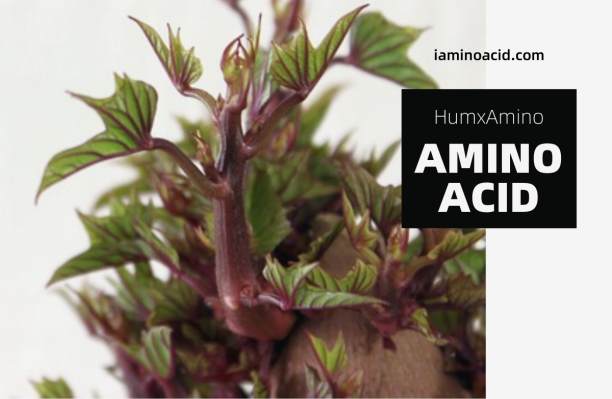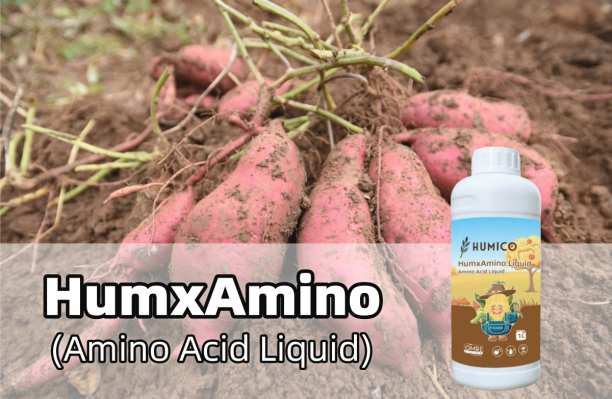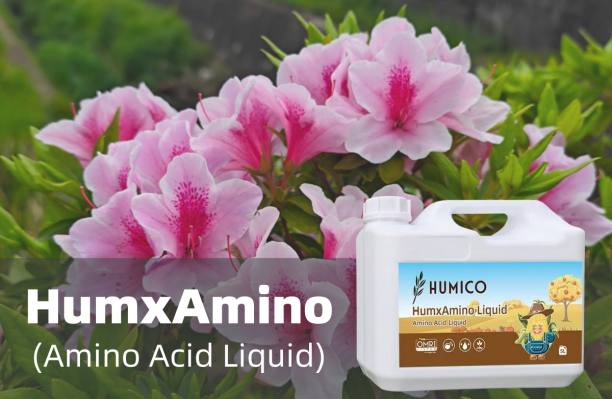Key Takeaways
- Good soil fertility is critical for healthy vine growth, strong yields and sweeter, better quality sweet potatoes.
- Choose fertilizers containing a balanced NPK ratio, potassium, phosphorus, nitrogen, and micronutrients for robust sweet potato growth.
- Test your soil regularly to help choose which fertilizer, and how much, to use — making sure nutrients correspond with the particular demands of your crop.
- Combine watering with fertilizing and broadcast, band or drip the nutrients for uniform distribution and maximum utilization.
- Set a fertilization plan according to sweet potato growth periods, and tweak as necessary based on plant feedback and local conditions.
- Good fertilization, after all, does not only help with growth, but with flavor, storage life, and disease resistance– ultimately a better harvest.
The best fertilizer for sweet potatoes is a balanced mix with low nitrogen and higher levels of phosphorus and potassium. Sweet potatoes love loose, sandy soil and require consistent nutrition to develop sturdy roots and sweet, healthy tubers. High nitrogen promotes leafy vines but smaller roots, so growers tend to use things like 5-10-10 or 8-24-24. These numbers indicate the percentage of nitrogen, phosphorus, and potassium in the blend. Organic options like compost or well-rotted manure work great as well, slowly feeding the crop. For optimum yield, farmers and home gardeners usually choose a fertilizer based on their soil test. The main body below shares more on how to choose and use the right fertilizer.

Why Soil Fertility Matters
Fertility is key with sweet potato plants. It determines how the crop develops, the yield size, and the quality of the sweet potato roots. Rich soil provides the sweet potatoes with what they need to grow strong. If the soil is poor, roots remain small, growth stagnates, and the crop yield diminishes. Sweet potato plants require a constant availability of essential nutrients. Potassium sustains large yields and quality root development, and sweet potatoes require roughly three times as much potassium as nitrogen. Sulfur is also vital; for every 500 bu/acre, the crop extracts approximately 10 lbs of sulfur from the soil. Without enough sulfur, growth can stall, and roots may become weak or misshapen.
Soil pH and structure both influence how sweet potato roots utilize nutrients. Well-drained, sandy-loam soils enable roots to absorb nutrients and air efficiently. If the soil is too compacted, roots can’t expand, leading to a suffering crop. The proper soil pH is crucial; if it falls below 6.5, magnesium becomes harder for roots to absorb, which can stunt growth. Low magnesium levels may manifest as yellow leaves or stunted plants. Testing every four to five years helps identify these issues early, allowing necessary adjustments to be made.
Balanced nutrients don’t only enhance yield — they cultivate staunchly healthy sweet potato plants. A healthy blend of minerals turns plants into effective pests and disease fighters. Yield increases, and the general condition of the crop is improved. Nutritious soil encourages straight, smooth root growth, which is essential for market quality. Sweet potatoes from fertile soil are generally firmer, tastier, and shapelier.
Soil fertility hits the grander scheme, as well. It impacts soil health, crop yields, and the land’s long-term sustainability as farmland. Maintaining soil vitality promotes sustainable agriculture and preserves the ecosystem.

Best Fertilizer for Sweet Potatoes
Sweet potatoes require a careful fertilizer regime to achieve optimum tuber size and yield. The proper balance of nutrients is essential to vigorous vines, robust roots and abundant, flavorful tubers. Fertilizers should be selected according to what sweet potatoes require, not just by what’s convenient.
The most important nutrients for sweet potatoes are:
- Potassium (K):Drives vine growth and helps make large, healthy tubers. Sweet potatoes require as much as 300 kg/ha.
- Phosphorus (P):Needed for strong root growth and early plant vigor; needs can be up to 200 kgs per hectare.
- Nitrogen (N):Supports leaves and stem growth but too much can cause lots of leaves and small, poor-quality tubers. Stay below 75 kg/ha.
- Micronutrients (Boron, Calcium, Magnesium, Sulfur):Needed in small amounts but still vital. Boron is crucial – 0.5 kg per hectare needs to be supplemented in low-boron soils to prevent an issue known as ‘blister’.
Balanced NPK fertilizers work best. Opt for a mix with more potassium and phosphorus than nitrogen, like a 5-10-15 or 8-24-24. If you don’t have a soil test, a general-purpose fertilizer with less nitrogen will serve you better than a high-nitrogen one. Slow-release fertilizers are good too, feeding the crop over time and reducing the chance of burn or leaching.
1. Potassium Power
Potassium is the primary force behind the growth of tubers, particularly in sweet potato plants. It allows them to develop robust vines and larger sweet potato roots. Incorporating sulfate of potash (SOP) at planting time is essential for a strong start, as it works on most soils. Without sufficient potassium, you risk frail plants and undersized, low-quality tubers, making regular soil checks crucial for optimal growth.
2. Phosphorus Foundation
Phosphorus develops sturdy roots. Not enough and sweet potatoes won’t root deep or bloom properly. Bone meal and rock phosphate are favorite picks. Make sure to check your soil for phosphorus prior to planting. High-phosphate fertilizers render tubers firmer and larger.
Phosphorus is key for early growth, particularly in cooler soil.
3. Nitrogen Needs
Nitrogen holds your sweet potato plants green and strong. However, excessive fertilizer can lead to lots of leaves and little tuber development. Apply only as much as is needed for optimal growth. Compost and manure are great sources, but monitor nitrogen levels to ensure even growth in your sweet potato roots.
4. Essential Micronutrients
Micronutrients are important, even in trace amounts, especially for crops like sweet potato plants. Calcium, magnesium, and sulfur maintain plant health, while boron is crucial; insufficient quantities can induce blisters on sweet potato roots. Foliar sprays assist in mending shortfalls quickly, leading to bigger yields and healthier tubers.

Organic Versus Synthetic Fertilizers
Whether you use organic or synthetic fertilizer greatly affects sweet potato development and soil health over time. Each has its own strengths and weaknesses that count with regard to soil health and crop yield. The table below summarizes the primary differences and benefits for easy reference.
| Feature | Organic Fertilizer | Synthetic Fertilizer |
| Nutrient Release | Slow, steady | Fast, immediate |
| Effect on Soil Structure | Improves soil texture | May harm soil structure long-term |
| Microbial Activity | Increases microbes and fungi | Can decrease beneficial microbes |
| Soil Health | Boosts fertility, organic carbon | Can lower fertility, raise acidity |
| Plant Health | Healthy, steady growth | Fast growth, but short-lived |
| Impact on Soil Biota | Encourages diversity | May hurt soil life |
| Longevity | Lasts longer in soil | Often needs repeat use |
| Examples | Compost, manure, biochar | NPK blends, urea, ammonium nitrate |
Organic fertilizers, such as compost and well-rotted manure, provide a gentle feed to plants and assist the soil in retaining water and nutrients. These compounds dissolve, allowing roots to absorb the nutrients they require without shocking the plant. They assist soil in maintaining its structure and increase the population of beneficial microbes. Research shows that organics can boost both yields and soil quality, increasing fungal diversity and organic carbon in the soil. For instance, compost can assist sweet potatoes in forming sturdier roots and increasing their size. Over time, organic fertilizers can enhance soil fertility and plant health, but the specific outcomes vary with regional climate and soil conditions.
Synthetic fertilizers, like NPK blends, provide an immediate jolt of nutrients when plants require them. They act quickly and patch deficiencies, so they’re convenient for farmers requiring a quick jolt. Applied for years, they can acidify and degrade soil, while scything through beneficial microbes and fungi. This can cause damaged soil and even reduced yields over time. Studies indicate synthetic fertilizers may harm the soil biota, even though they’re convenient and simple to dose.
Others employ a combination, which can provide plants what they require in the immediate term while still cultivating improved soil for the long run.
How to Fertilize Sweet Potatoes
Nailing the nutrient balance is crucial for sweet potatoes to grow strong and yields to be plentiful. Something balanced like 10-10-10 is good for roots and tubers and won’t promote excessive leaves. Fertilizer should be incorporated into the soil prior to planting, then reapplied when plants are 15 cm tall. Cease fertilizing 3–4 weeks before harvest to prevent tuber quality or growth. Over-fertilizing or fertilizing with too much nitrogen, in particular, will encourage vigorous vines but fewer potatoes underground. Fertilizer should always be applied a few centimeters from the plant stems to prevent burning the roots.
Typical steps for an effective fertilization plan:
- Test soil for nutrient content and pH.
- Select a balanced or potash rich fertilizer (e.g., 10-10-10).
- Mix fertilizer into the soil before planting.
- Apply fertilizer again when plants reach 15 cm tall.
- Apply fertilizer in shallow trenches a few centimeters away from plants.
- Avoid over-fertilizing to prevent excess foliage.
- Stop fertilizing 3–4 weeks before harvest.
- Monitor plant health and adjust as needed.
Soil Testing
Soil testing is an initial and important step in sweet potato fertilization. It displays existing nutrient and pH levels, assisting in steering your fertilizer selection. A test may reveal a soil deficiency of potassium, a vital ingredient for tuber size and quality.
Test results guide you in applying the right amendments — such as lime to raise a low pH or extra potassium if your soil happens to be deficient. Retest soil every season or after significant alterations to your fertilization routine. This helps keep nutrient levels in check and makes certain you don’t accumulate excess salts or nutrients that damage plants.
Apply findings to fine-tune fertilizer rates, maintaining modest applications. Sweet potatoes like balanced, well-tended soil, not a surplus.
Application Method
Select a technique that provides the plants uniform access to nutrients. Broadcasting distributes fertilizer on the entire bed, and banding positions it in bands alongside the plants. Granular fertilizer is a rock for sweet potatoes, as it degrades slowly and nourishes roots over time.
To promote even growth, fertilize in shallow furrows a few centimeters from the plant stems. This prevents root burn and keeps nutrients near root growth. Foliar feeding, or spraying diluted fertilizer on leaves, is beneficial during rapid growth or if plants appear nutrient deficient.
Be sure to spread all fertilizers evenly and at recommended rates. Excess fertilizer, or fertilizer applied too near the vine, can be more detrimental than beneficial.
Water Integration
Water and fertilizer lie best together. Sweet potato roots require moisture to absorb nutrients. Dry conditions reduce this uptake, so never fertilize when soil is dry.
Drip irrigation aids by delivering both water and nutrients directly to roots. This keeps leaves dry and reduces disease potential. Check soil moisture regularly. Sweet potato vines hate stress, especially when fed.
If rain is not imminent, water in fertilizer to help it soak into the soil. This easy measure can enhance root absorption and yield outcomes.
When to Fertilize Sweet Potatoes
Timing fertilizer for sweet potato plants is about matching nutrition to their growth stages. Every phase of the sweet potato life cycle, including tuber development, requires specific nutrition and attention. Such a schedule lets sweet potato roots develop, vines expand, and tubers thicken without wasting fertilizer or damaging your crop.
Before Planting
Begin by testing the soil. A soil test prior to planting informs you of the pH and nutrient levels, so you know what to supplement. Sweet Potatoes grow best on acid to neutral soil with a pH of 5.8 to 6.0, but will tolerate 5.5 to 6.8. If the soil is off you can correct it with lime or sulfur as necessary.
Incorporate a balanced fertilizer such as 12-12-12 or 15-15-15 into the soil prior to planting. This way aids young plants obtain essential nutrients when they emerge. A good boost of organic matter from some compost or aged manure makes a better home for roots. Add a starter dose of fertilizer in a planting hole or furrow to ensure the roots have immediate access as they begin to develop.
During Growth
Create a growth checklist: check leaf color, vine length, and soil moisture. Be alert for a slow growth or pale leaves which might indicate a nutrient deficiency. With soil tests and visual cues, you can determine if more fertilizer is required as vines spread.
Side-dress with fertilizer once vines run, but apply only a light nitrogen feeding. Too much will cause tons of leaves and very few tubers. Split nitrogen applications work well; they feed the plants while keeping vine growth in check. Foliar’s sprayed through the season can quickly fill nutrient gaps. Moisten the soil but don’t saturate it so roots can utilize nutrients well.
Fertigation—applying fertilizer in irrigation water—can help when the growth is rapid. This technique can help distribute nutrients without disrupting roots. Just keep an eye out for yellowing or stunted vines, which might require a quick remedy.
Late Season
Your last few weeks, reduce nitrogen. Sweet potatoes required to shift energy into the tubers, not the vines. A late-season fertilizer of potash and phosphorus can assist tubers in filling out and storing well.
Pay attention to the weather and local climate. Warm, wet spells may require less added fertilizer. Test the soil again to be sure nutrients are good as harvest approaches. Modify your feeding schedule if the harvest date shifts, so tubers mature up to digging.
Beyond Basic Plant Growth
Sweet potatoes fertilization is about more than just increasing yields; it significantly impacts sweet potato roots’ flavor, shelf life, and health. Understanding the right fertilizer balance enables growers to cultivate high-quality varieties of sweet potato plants that stand out in the market, enhancing their overall value.
Flavor Profile
Sweet potatoes grown in nutrient-rich soil and with the proper pH—ideally between 5.8 and 6.2—are sweeter and more flavorful. The sugar and starch content of the tubers corresponds to the nutrients in the soil. Providing a balanced 10-10-10 at critical moments of the season assists sweet potatoes in reaching their flavor potential. Excessive nitrogen results in bland tubers and excessive leafy vines, not delicious roots.
Playing with different fertilizers – organic compost vs mineral blends – can impart subtle taste variations between varieties. Others growers mention that potassium-heavy feeds increase sweetness in orange-fleshed varieties. Routine soil testing ensures you don’t inadvertently create nutrient deficiencies (or surfeits) that could degrade the taste of your harvest. Tracking and modification as plants develop is crucial for taste that satisfies consumer standards.
Storage Life
Sweet potatoes that are healthy and well-fertilized store better after harvest. Tubers that develop with even nutrients – potassium in particular – have firmer flesh and thicker skins, which helps them store longer. Good curing, after harvest, generally at around 15–16° C with high humidity, allows the skin to toughen and sugars to mature which can sometimes keep sweet potatoes in good condition for as long as six months.
For optimal outcomes, harvest gently when the vines yellow, then store carefully in cool, moist conditions. Fail to manage nutrients and you’ll get paper thin skins on sweet potatoes that shrivel or rot with ease. Don’t over-fertilize — it can make tubers more prone to damage.
Disease Resistance
More than just plant growth, balanced fertilization make sweet potato plants stronger to resist diseases and pests. Nutrient-rich soils assist the plants in developing sturdy cell walls and root systems. Deficiencies, particularly potassium or phosphorous, make plants susceptible and invite root rot or wilting.
A 10-10-10, at planting and mid-season, keeps nutrient levels consistent. Keep your eye out for yellowing leaves or stunted growth, which these signs could indicate a deficiency of essential minerals. Combining good fertilization with strategies such as mulching, weeding, and deep watering gives you the best of both worlds — great plant health and robust crops.
Conclusion
A strong start comes with good soil and the right feed for sweet potatoes. Sweet potatoes prefer soil that is adequate in potassium and low in nitrogen. Compost or well-rotted manure works fine. Liquid seaweed or bone meal can top off the gaps. Both organic and synthetic varieties can aid but organics build soil over time. Never too much feed. Excess produces numerous leaves and short roots. Observe your plants and supplement with feed if growth tails off or leaves pale. For the tastiest roots, keep soil loose and water constant. Experiment with various feeds and see what works in your patch. For additional advice or anecdotes, join a local garden club or query farmers around you.
Frequently Asked Questions
What nutrients do sweet potatoes need most?
Sweet potatoes, an important food crop, require a high amount of potassium and phosphorus for optimal tuber development, while balanced nutrition supports healthy growth and prevents excessive leafy growth from nitrogen.
Can I use compost as fertilizer for sweet potatoes?
Indeed, compost is terrific for sweet potato plants. It enhances the soil’s structure, delivers key nutrients for robust sweet potato roots, and nourishes tuber development when fully decomposed.
Is organic fertilizer better than synthetic for sweet potatoes?
Both types work, but organic fertilizers, which release nutrients for sweet potato plants, boost soil health in the long run and are safer for the environment. Synthetic fertilizers provide rapid effects but can be potentially dangerous if not applied properly.
How often should I fertilize sweet potatoes?
Fertilizer for sweet potato plants should be applied once at planting and again when the vines begin to run, as excessive fertilizer can lead to too much leafy growth and smaller sweet potato roots.
Should I avoid high-nitrogen fertilizers for sweet potatoes?
Yes, steer clear of high-nitrogen fertilizers for sweet potato plants. Excess nitrogen produces big, lush vines but results in small, low-quality sweet potato roots. Opt for fertilizers with higher phosphorus and potassium numbers to support tuber development.
Can I grow sweet potatoes without chemical fertilizers?
Yes, sweet potato plants can thrive if you use organic options such as compost, well-rotted manure, or balanced organic fertilizers to support sustainable and healthy sweet potato roots.
What’s the best soil pH for sweet potatoes?
Sweet potato plants thrive in slightly acidic to neutral soil, with a pH of 5.5 to 6.5, which is crucial for vigorous growth and high yields.
Written by HumxAmino | Amino Acid Fertilizer
Original article source:



